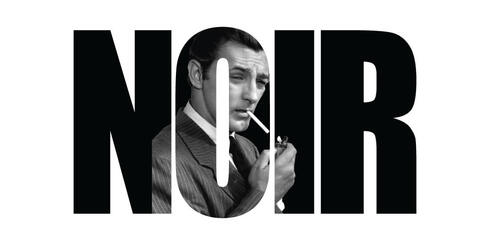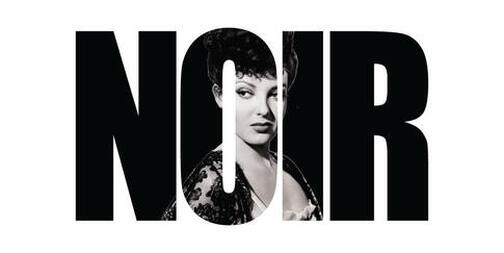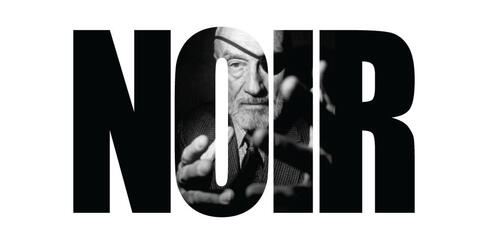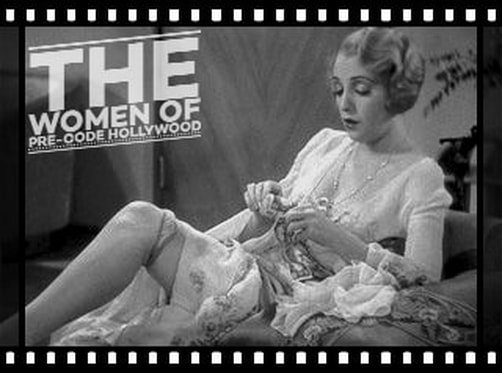MARK STEVENS
AND FILM NOIR
Mark Stevens made a notable impact on the film noir genre through his performances in several influential films. His roles in film noir showcased his ability to embody complex, morally ambiguous characters and contributed to the overall tone and atmosphere of the genre.
Stevens' portrayal of tough and brooding characters with a dark past became his trademark in film noir. He had a natural ability to convey a sense of inner turmoil and conflict, which was essential in capturing the psychological and existential themes prevalent in film noir narratives.
One of Stevens' most significant contributions to film noir was his role in "The Dark Corner" (1946). Directed by Henry Hathaway, the film is considered a quintessential example of the genre. Stevens played the lead role of private detective Bradford Galt, falsely accused of murder and caught up in a web of deception. His performance captured the cynical and hard-boiled nature of the genre, and his chemistry with co-star Lucille Ball added depth to the film.
Stevens also appeared in other notable film noir productions, such as "Within These Walls" (1945) and "The Street with No Name" (1948). These films further showcased his ability to portray morally ambiguous characters caught up in dangerous and shadowy worlds.
His contributions to film noir extended beyond acting. In 1955, Stevens directed and starred in "Cry Vengeance," a film noir thriller. This marked his directorial debut and demonstrated his understanding of the genre's visual style and narrative tropes.
Mark Stevens' performances in film noir helped shape the genre's aesthetic and thematic elements. His brooding intensity and ability to convey the dark side of human nature added depth and complexity to the characters he portrayed. Stevens' impact on film noir remains significant, as his performances contributed to the enduring legacy of the genre..
Stevens' portrayal of tough and brooding characters with a dark past became his trademark in film noir. He had a natural ability to convey a sense of inner turmoil and conflict, which was essential in capturing the psychological and existential themes prevalent in film noir narratives.
One of Stevens' most significant contributions to film noir was his role in "The Dark Corner" (1946). Directed by Henry Hathaway, the film is considered a quintessential example of the genre. Stevens played the lead role of private detective Bradford Galt, falsely accused of murder and caught up in a web of deception. His performance captured the cynical and hard-boiled nature of the genre, and his chemistry with co-star Lucille Ball added depth to the film.
Stevens also appeared in other notable film noir productions, such as "Within These Walls" (1945) and "The Street with No Name" (1948). These films further showcased his ability to portray morally ambiguous characters caught up in dangerous and shadowy worlds.
His contributions to film noir extended beyond acting. In 1955, Stevens directed and starred in "Cry Vengeance," a film noir thriller. This marked his directorial debut and demonstrated his understanding of the genre's visual style and narrative tropes.
Mark Stevens' performances in film noir helped shape the genre's aesthetic and thematic elements. His brooding intensity and ability to convey the dark side of human nature added depth and complexity to the characters he portrayed. Stevens' impact on film noir remains significant, as his performances contributed to the enduring legacy of the genre..
AVAILABLE FILMS:
BETWEEN MIDNIGHT AND DAWN (1950)
DARK CORNER, THE (1946)
DESTINATION TOKYO (1943)
DOUGHGIRLS, THE (1944)
GOD IS MY CO-PILOT (1945)
HOLLYWOOD CANTEEN (1944)
OBJECTIVE, BURMA (1945)
PASSAGE TO MARSEILLE (1944)
PRIDE OF THE MARINES (1945)
SNAKE PIT, THE (1948)
STREET WITH NO NAME, THE (1948)
TIMETABLE (1956)
DARK CORNER, THE (1946)
DESTINATION TOKYO (1943)
DOUGHGIRLS, THE (1944)
GOD IS MY CO-PILOT (1945)
HOLLYWOOD CANTEEN (1944)
OBJECTIVE, BURMA (1945)
PASSAGE TO MARSEILLE (1944)
PRIDE OF THE MARINES (1945)
SNAKE PIT, THE (1948)
STREET WITH NO NAME, THE (1948)
TIMETABLE (1956)
VIDEO TRIBUTE
Mark Stevens
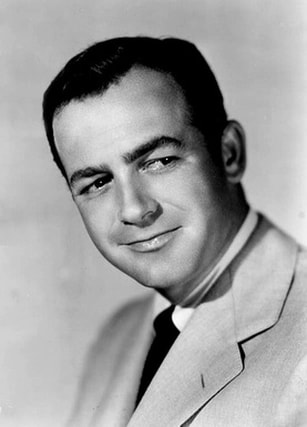
Mark Stevens (born Richard William Stevens; December 13, 1916 – September 15, 1994) was an American actor, director, and producer. He appeared in numerous films and television shows throughout his career, making a significant impact on the entertainment industry.
Born in Cleveland, Ohio, Stevens began his acting career on stage before transitioning to film. He made his screen debut in 1939 and soon gained recognition for his talent and versatile performances. Stevens appeared in a variety of genres, including drama, film noir, crime, and westerns.
In the 1940s and 1950s, Stevens became associated with the film noir genre, starring in notable films such as "Within These Walls" (1945), "The Dark Corner" (1946), and "The Street with No Name" (1948). He was admired for his ability to portray tough, brooding, and complex characters.
Stevens also ventured into directing and producing. In 1955, he directed his first film, "Cry Vengeance," in which he also starred. He went on to direct and produce several other films, including "Gun Fever" (1958) and "Cry Tough" (1959).
In addition to his film work, Stevens made appearances on television shows, including guest roles on popular series like "Alfred Hitchcock Presents" and "The Twilight Zone."
Beyond acting, Stevens was known for his involvement in the Screen Actors Guild (SAG). He served as president of SAG from 1960 to 1963, during which he worked to protect actors' rights and improve working conditions in the industry.
Mark Stevens continued to act and direct in films and television throughout the 1960s and 1970s, but his presence gradually diminished in later years. He retired from the industry in the early 1980s.
On September 15, 1994, Mark Stevens passed away at the age of 77 in San Diego, California. He left behind a legacy as a talented actor who made notable contributions to the film noir genre and the entertainment industry as a whole.
Born in Cleveland, Ohio, Stevens began his acting career on stage before transitioning to film. He made his screen debut in 1939 and soon gained recognition for his talent and versatile performances. Stevens appeared in a variety of genres, including drama, film noir, crime, and westerns.
In the 1940s and 1950s, Stevens became associated with the film noir genre, starring in notable films such as "Within These Walls" (1945), "The Dark Corner" (1946), and "The Street with No Name" (1948). He was admired for his ability to portray tough, brooding, and complex characters.
Stevens also ventured into directing and producing. In 1955, he directed his first film, "Cry Vengeance," in which he also starred. He went on to direct and produce several other films, including "Gun Fever" (1958) and "Cry Tough" (1959).
In addition to his film work, Stevens made appearances on television shows, including guest roles on popular series like "Alfred Hitchcock Presents" and "The Twilight Zone."
Beyond acting, Stevens was known for his involvement in the Screen Actors Guild (SAG). He served as president of SAG from 1960 to 1963, during which he worked to protect actors' rights and improve working conditions in the industry.
Mark Stevens continued to act and direct in films and television throughout the 1960s and 1970s, but his presence gradually diminished in later years. He retired from the industry in the early 1980s.
On September 15, 1994, Mark Stevens passed away at the age of 77 in San Diego, California. He left behind a legacy as a talented actor who made notable contributions to the film noir genre and the entertainment industry as a whole.
Quotes:
None available
Trivia:
Romantically involved for a time with actress Hedy Lamarr.
An instinctive rebellious nature had him kicked out of every school he ever attended, public or private.
Became a contract player for Warners at $100 a week in 1943 but they changed his looks and his stage name. They darkened and straightened his curly ginger-colored hair and covered his freckles. At first he was billed as Stephen Richards, later changed it to Mark Stevens at the suggestion of Darryl F. Zanuck when he switched to 20th Century-Fox.
Once prepared for training with the Canadian Olympic Diving Team although seriously damaged his back while working out on the high springboard. This injury later kept him out of military service in the United States Army in World War II and resulted in an operation.
An instinctive rebellious nature had him kicked out of every school he ever attended, public or private.
Became a contract player for Warners at $100 a week in 1943 but they changed his looks and his stage name. They darkened and straightened his curly ginger-colored hair and covered his freckles. At first he was billed as Stephen Richards, later changed it to Mark Stevens at the suggestion of Darryl F. Zanuck when he switched to 20th Century-Fox.
Once prepared for training with the Canadian Olympic Diving Team although seriously damaged his back while working out on the high springboard. This injury later kept him out of military service in the United States Army in World War II and resulted in an operation.

